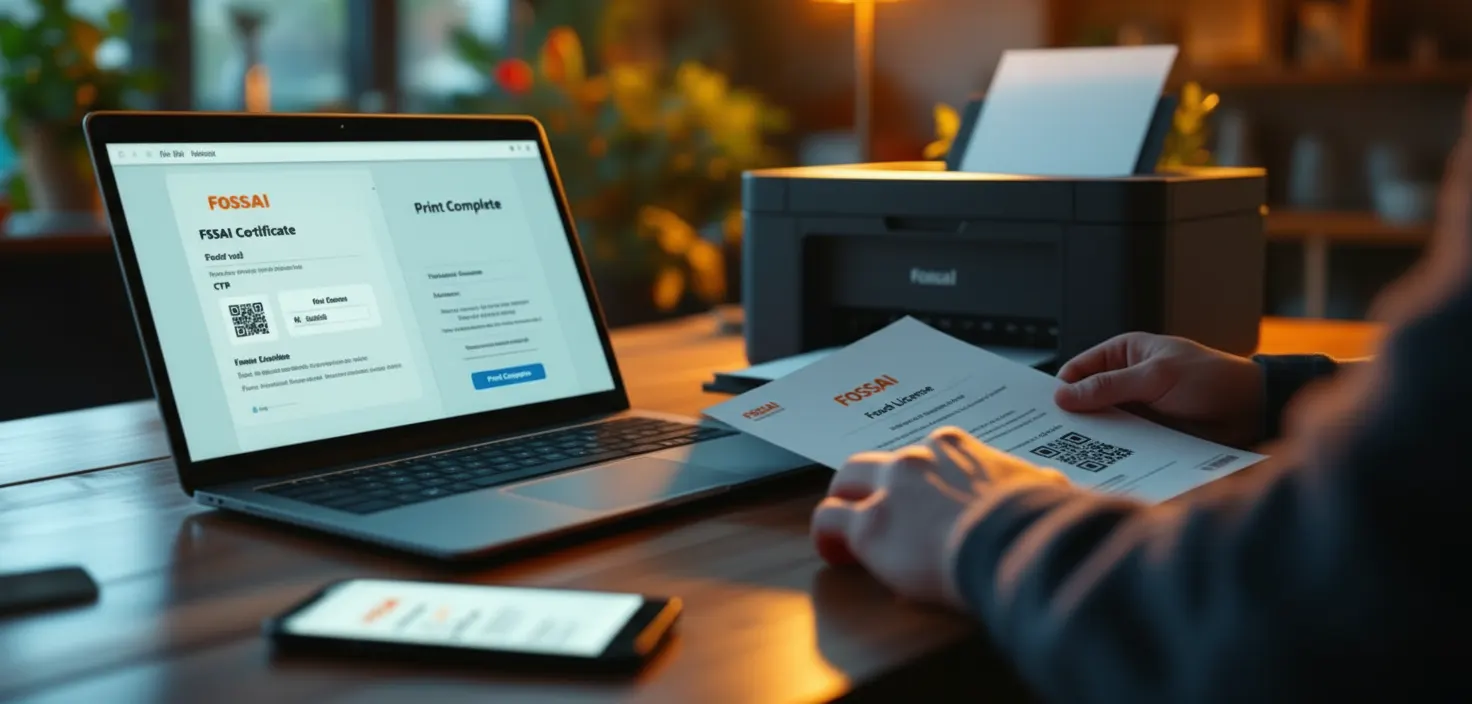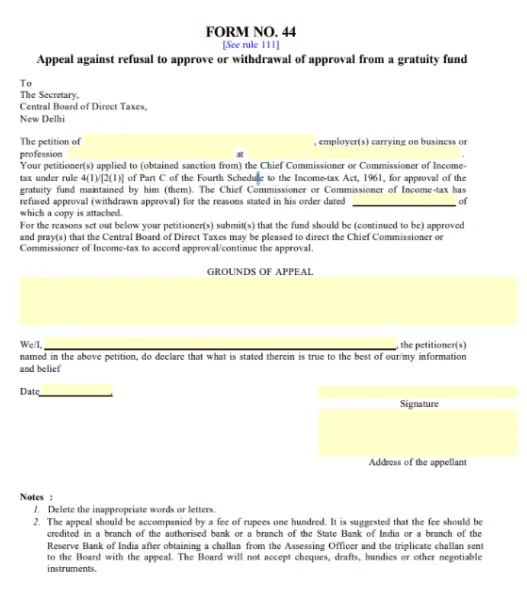
Applicants use CDSCO Form 44 to obtain CDSCO registration to import, manufacture, or conduct clinical trials for new drugs in India. This form ensures that authorities verify the safety, efficacy, and quality of any new drug before applicants can test, sell, or market it.
Form 44 serves as the gateway for pharmaceutical companies to comply with Indian regulations and bring new drugs to the market legally.
Behind this process is the Central Drugs Standard Control Organization (CDSCO), India’s National Regulatory Authority under the Ministry of Health and Family Welfare. Operating under the Directorate General of Health Services (DGHS), CDSCO ensures that every drug meets strict safety and quality standards. It approves drugs and clinical trials, sets pharmaceutical benchmarks, oversees imports, and works closely with State Drug Control Organizations to enforce the Drugs and Cosmetics Act, 1940.
CDSCO regulates both pharmaceuticals and medical devices in India. However, it’s important to note that Form 44 is specifically applicable to new drugs and fixed-dose combinations. The regulatory authorities govern medical devices separately under the Medical Devices Rules, 2017, and require applicants to use different forms and procedures for approval.
For any business eager to bring a new drug to life, obtaining Form 44 is more than a legal requirement; it’s the bridge between a scientific breakthrough and its real-world impact. In this blog, we will take you step by step through the Form 44 process, covering the required documents, timelines, procedural steps, and common pitfalls, so your innovation can reach patients safely and legally.

What is the Regulatory and Legal Background of Form 44?
India’s drug regulatory authorities have meticulously crafted the legal foundation for Form 44 to ensure the safety and efficacy of new drugs. This section details the specific laws, rules, and authorities governing the application process.
- Statutory Basis: The Drugs & Cosmetics Act, 1940, and the Drugs & Cosmetics Rules, 1945, define the legal framework for Form 44, specifically through Rules 122A, 122B, 122D, and 122DA.
- New Drugs and Clinical Trials Rules, 2019: These rules represent a major overhaul. They provide a comprehensive framework for new drug approval and clinical trials, effectively replacing the previous guidelines in Schedule Y. Under these rules, Form 44 is the designated application form for seeking approval to manufacture, import, or conduct clinical trials of new drugs in India.
- Regulatory Authority: The CDSCO, led by the Drugs Controller General of India (DCGI), is the central authority that reviews and approves all Form 44 applications.
- Key Trends: The most significant recent trend is the mandatory shift to online submissions. The SUGAM portal (cdscoonline.gov.in) is now the exclusive platform for filing Form 44 and its accompanying dossier, replacing the traditional paper-based system. This transition is part of a larger initiative to enhance transparency and streamline the regulatory process.
When and Why Should You Use Form 44?
Form 44 is the essential application form required to initiate the regulatory approval process for a new drug in India. Its use is mandatory for any sponsor or applicant looking to conduct the following activities:
- Importing a new drug: This covers bulk drugs (Active Pharmaceutical Ingredients or APIs) and finished formulations that the authorities have not yet approved for import and sale in India.
- Manufacturing a new drug or fixed-dose combination (FDC): This applies to both first-time manufacturers and those producing an already approved drug. For FDCs, applicants must submit Form 44 to demonstrate the therapeutic justification and the safety and efficacy of the new combination.
- Conducting a clinical trial: Form 44 is the application to get permission from CDSCO to perform a clinical trial (Phases I, II, or III) on a new drug in India.
- Subsequent approvals: This includes obtaining permission for a new indication, a different dosage form, or a new route of administration for an already approved drug.
- Herbal, biological, or biosimilar drugs: Regulatory authorities may also require sponsors of these categories to submit Form 44 to obtain approval before manufacturing, importing, or conducting clinical trials.
How is Form 44 different from other CDSCO forms?
Understanding Form 44 in relation to other CDSCO forms is essential to managing the regulatory lifecycle of new drugs:
- Form 44: This is the application for permission to import, manufacture, or conduct clinical trials of a new drug in India. It initiates the regulatory approval process with the CDSCO.
- Form 45 vs. Form 46:
- Form 45: License to import a new drug after approval of Form 44.
- Form 46: License to manufacture a new drug after approval of Form 44.
In other words, a successful Form 44 submission for import leads to a Form 45 license, while for manufacturing, it results in a Form 46 license.
- Form 45: License to import a new drug after approval of Form 44.
- Form 40: This is a general application for a registration certificate to import any drug. If the drug is new, approval of Form 44 is a prerequisite before obtaining Form 40.
- Form CT-06: Applicants must submit Form 44 along with detailed trial protocols, investigator brochures, and ethics committee approvals when applying to conduct clinical trials. Upon approval, the CDSCO grants permission for the trial in Form CT-06.
Form 44 is the initial permission application, whereas Forms 45, 46, 40, and CT-06 are licenses or permissions granted after approval of Form 44, depending on the activity (import, manufacture, or clinical trials).
When Do Applicants Not Need to Submit Form 44?
While Form 44 is the standard for new drugs, there are specific scenarios where its use is not required:
- Drugs for personal use: The import of a small quantity of a new drug for a patient’s personal use, with a valid prescription, generally does not require a Form 44 submission.
- Post-approval changes: Applicants may submit minor changes to an approved drug, such as changes to the product’s packaging or label, through a different process. Such changes may not require a new Form 44 application. However, any major change (e.g., a new manufacturing site, a new indication, or a change in the dosage form) necessitates a new application to CDSCO for permission.
- Test licenses: Applicants must obtain a separate Test License, using Form 12, to import a new drug solely for testing or analysis.
- Medical devices: Regulatory authorities govern these separately under the Medical Devices Rules, 2017, and require applicants to use different forms, such as MD-14 and MD-15, instead of Form 44.
What does Form 44 include in its Structure and Content?
Form 44 requires a comprehensive dossier structured according to the Common Technical Document (CTD) format. It includes applicant and drug details, intellectual property status, and a complete data package as per the New Drugs and Clinical Trials Rules, 2019, and Schedule Y.
1. Applicant Details: This section requires basic administrative information: the name and address of the applicant firm, the name and address of the manufacturing site, and the details of the authorized signatory.
2. Drug Particulars: The applicant provides details about the drug, including:
- Official name of the drug
- Brand name (if any)
- Dosage form (e.g., tablet, capsule, injection, syrup)
- Composition of the drug, including both active and inactive ingredients
- Pharmacological classification of the drug
- Proposed indications for which the drug will be used
3. Patent/Intellectual Property Status: The application must specify the patent status of the drug in India, as well as its regulatory status in other countries.
4. Data & Evidence (The Dossier): This section provides scientific and technical data to support the drug’s safety and efficacy and is organized into modules:
- Chemical & Pharmaceutical Data: Includes CMC information, manufacturing process, quality control, analytical specifications, and stability data.
- Preclinical Data: Animal pharmacology and toxicology study results demonstrating safety before human trials.
- Clinical Trials Data: Reports from all clinical trial phases (I–III) on safety, efficacy, and dosage.
- Bioavailability & Other Studies: Data on bioavailability, bioequivalence, dissolution, and impurities, especially for generics or new formulations.
- Comparative Evaluation: For new fixed-dose combinations, submit therapeutic justification and comparison with existing therapies.
- Regulatory Status in Other Countries: Proof of the drug’s approval status in countries with stringent regulatory authorities (e.g., US, UK, EU, Japan, Australia).
5. Labeling and Packaging: Include the proposed product monograph and drafts of all labels, cartons, and packaging inserts.
6. Fees and Declaration: Provide proof of fee payment (via SUGAM portal) and a formal declaration with the authorized representative’s signature.
7. Indexing of Documents: Submit a well-indexed dossier with clear page numbers to help reviewers navigate the data.
8. SUGAM Portal Fields: Complete all portal-specific fields for data entry, document uploads, and application tracking.
What Documents are Required for a Form 44 Submission?
A well-organized and complete dossier is crucial for a successful Form 44 submission. The required documents, as per CDSCO guidelines, should be compiled in a logical order, typically following the CTD format.
1. Cover Letter: A formal letter introducing the application, specifying the purpose (e.g., new drug import, clinical trial), and listing the enclosed documents.
2. Power of Attorney: A legally authenticated document authorizing the Indian agent to act on behalf of the foreign manufacturer.
3. Proof of Fee Payment: The receipt from the SUGAM portal or a treasury challan showing payment of the prescribed application fee.
4. Drug Information:
- Certificate of Analysis (COA): For the drug substance and finished product from at least three batches.
- Drug Master File (DMF): A confidential, detailed document on the manufacturing process of the API.
- Stability Reports: Data from accelerated and real-time stability studies to establish the drug’s shelf life.
5. Scientific and Clinical Data:
- Preclinical Reports: Full reports of animal pharmacology and toxicology studies. This data is vital for assessing the drug’s safety profile before human trials.
- Clinical Study Reports: Comprehensive reports from all phases of clinical trials (Phase I, II, and III), including protocols, case report forms, and statistical analysis plans.
- Bioavailability and Bioequivalence (BA/BE) Studies: Data demonstrating that the drug’s active ingredient is absorbed into the body in the same way as a reference product, if applicable.
6. Regulatory Status and Marketing:
- Regulatory Status in Other Countries: A list of countries where the drug is approved, marketed, or undergoing trials, often accompanied by a Certificate of Pharmaceutical Product (CPP) from a regulatory authority in a well-regulated country.
- Proposed Labels and Packaging: Mock-ups of the product labels, cartons, and package inserts.
7. Declarations and Undertakings: Duly signed declarations from the applicant and, in the case of clinical trials, from the principal investigator.
What are the Fees, Payment Modes, and SUGAM Portal Details?
The process is primarily online via SUGAM, but offline submissions with DD payments are still accepted in specific scenarios.
Application Fees
The fees for a Form 44 application vary depending on the drug and the purpose of the application. For instance, the fee for an application to manufacture a new drug in India is generally ₹50,000. Fees for clinical trials are based on the phase of the trial and the drug category.
Payment Mode and Procedure
- Online Payment: The only accepted mode of payment is online through the BharatKosh payment gateway, which is integrated with the SUGAM portal.
- Submission on SUGAM: After logging into the SUGAM portal, the applicant fills out Form 44 online, uploads all required documents, and then proceeds to the payment section. Upon successful payment, a unique application number is generated, and an acknowledgment is provided. This number is used to track the application’s status.
Portal Procedures and Constraints
The SUGAM portal is designed to be a single-window system for all regulatory submissions. It offers several benefits but also has specific procedural constraints:
- Online Submission: All documents, including the Form 44, the dossier, and all supporting evidence, must be uploaded in digital format (PDF).
- Document Uploads: The portal may have file size limits, so applicants must ensure their documents are appropriately compressed without compromising readability. While the system is becoming more advanced, some users still report challenges with multi-part document uploads.
- Recent Changes: CDSCO has been continuously updating the portal to make it more efficient. Regulatory authorities have recently mandated online-only submissions for specific categories, such as veterinary drugs, and are phasing out the offline submission option entirely. These changes aim to streamline the regulatory process, reduce processing times, and increase transparency.
What is the Step-by-Step Application Process for Form 44?
Applicants follow a multi-step procedure for the CDSCO medical device application in India, primarily conducted through the online SUGAM portal. They prepare a comprehensive dossier, submit the application along with the required fees, and respond to any queries from CDSCO before authorities make a final decision.
Step 1: Pre-Submission Meeting/Discussion (if applicable)
Before formal submission, applicants can request a pre-submission meeting with the CDSCO to clarify regulatory requirements, particularly for complex or novel devices. This step helps align the application with the agency’s expectations and can prevent future delays.
Step 2: Dossier Preparation / Compiling Data
This is a crucial and often the most time-consuming step. The applicant must prepare a Device Master File (DMF) and, for domestic manufacturers, a Plant Master File (PMF). The dossier must contain all necessary documentation, including:
- Administrative documents: Power of Attorney, Authorization Letter, Declaration of Conformity.
- Quality Management System (QMS) documents: ISO 13485 certificate.
- Technical information: Device specifications, design, risk analysis, and clinical evidence.
- For imported devices: Free Sale Certificate (FSC) from the country of origin.
Step 3: Filling & Uploading on SUGAM Portal
Applicants must register on the CDSCO SUGAM portal. They submit applications electronically using Form MD-7 for domestic manufacturers or Form MD-14 for importers and upload all required documents to the portal.
Step 4: Payment & Acknowledgment
Applicants pay the prescribed application fees, which vary based on the device’s class and number of devices, online. After successful payment and submission, the system generates an official acknowledgment.
Step 5: CDSCO Review / Queries / Deficiency Letter
The CDSCO reviews the submitted application and documents. If the reviewers find any missing information, inconsistencies, or deficiencies, they will issue a deficiency letter (also known as a query letter). This letter is not a rejection but an opportunity to correct the application. Common queries include:
- Incomplete or expired documents.
- Insufficient clinical data or technical details.
- Incorrect device classification.
- Discrepancies in labeling or product descriptions.
Step 6: Applicant Responds to Queries / Resubmission
The applicant must carefully review the deficiency letter, address each point comprehensively, and submit a formal response along with any corrected or additional documents via the SUGAM portal. Failure to respond within the given timeframe (usually 30 days) can lead to the application’s rejection.
Step 7: Final Decision (Approval / Rejection)
After the review of the applicant’s response, the CDSCO will make a final decision. For higher-risk devices, this may involve a review by a Subject Expert Committee (SEC).
Step 8: Issuance of Permission / License
If the application is approved, the CDSCO issues the license in the appropriate form (MD-9 for manufacturers, MD-15 for importers).
How Long Does Form 44 Approval Remain Valid and How Do Applicants Renew It?
Once a medical device receives approval from the Central Drugs Standard Control Organization (CDSCO) in India, the manufacturer or importer must comply with ongoing regulatory requirements to maintain its market presence. This includes managing the license’s validity, submitting change requests for any modifications, and following the renewal/retention process.
Validity Period of a Form 44 Permission / License
The validity of a Form 44 permission or license can differ depending on the type of product. For drugs, the license is generally valid as long as the conditions of approval are met and compliance with regulatory requirements is maintained.
Regulatory authorities consider medical device licenses issued under the Medical Devices Rules, 2017 (e.g., Form MD-9 for manufacturers and Form MD-15 for importers) valid indefinitely, as long as the license holder pays retention fees and submits updated documents as required. Authorities may cancel the license if the holder fails to comply.
Cases for Amendments or Modifications (Variations)
Applicants must submit any change to a medical device or its manufacturing process after initial approval to the CDSCO for approval. This ensures that the change does not compromise the device’s safety, quality, or performance.
Common cases for amendments include:
- Change in the device:
- Modification in the design, material, or specifications.
- Change in the intended use or indications.
- Modification of the manufacturing process or sterilization method.
- Alteration to the approved shelf life.
- Change in the manufacturer/importer:
- Change in the name or address of the manufacturing site.
- Change in the company’s constitution or ownership (e.g., from a private to a public company).
- Change in the Authorized Agent in India.
- Changes to labeling or packaging.
- Addition of a new model or variant to the existing license.
How to Submit a Variation / Change Request?
The process for submitting a change request is conducted through the SUGAM online portal. The steps are as follows:
- Identify the nature of the change: Determine if the change is “minor” or “major” as per the CDSCO’s guidelines. Major changes often require more extensive documentation and review.
- Prepare the updated documentation: This includes an application letter detailing the change, technical documents supporting the modification (e.g., new test data, risk assessments), updated labels, and any revised master files (DMF/PMF).
- Submit the application on SUGAM: The license holder logs into their SUGAM account and initiates an application for post-approval changes. The required forms and documents are uploaded to the portal.
- CDSCO Review: The CDSCO reviews the application. They may issue a query or deficiency letter if further information is required.
- Final Decision: CDSCO approves the variation after a satisfactory review and endorses it on the original license.
Renewal / Retention Procedures
The process for renewing or retaining a license is a statutory requirement to keep the perpetual license active. Applicants complete this process every five years, which is separate from submitting a change request for a specific variation. They manage the procedure through the SUGAM portal, which involves:
- Timely Application: The license holder must apply for retention well in advance of the five-year mark to avoid penalties.
- Submission of Updated Documents: The application must be accompanied by a set of updated documents, including:
- A covering letter stating the intent to retain the license.
- Details of the existing base and endorsement licenses.
- A statement confirming no change in the Device Master File (DMF) and Plant Master File (PMF), or details of any approved post-approval changes.
- Post-marketing surveillance data and sales data from the last five years.
- Updated certificates, such as ISO 13485 and the Free Sale Certificate from the country of origin.
- Payment of Retention Fee: Applicants must pay the prescribed fee, equal to the original license fee, online.
- CDSCO Review: The CDSCO will review the submitted documents and payment.
- Retention: The authorities officially retain the license for another five years after a successful review.
Conclusion
Submitting Form 44 CDSCO is a crucial step for pharmaceutical companies and clinical researchers aiming to introduce new drugs or conduct trials in India. It ensures that all new drugs meet the safety, quality, and efficacy standards set by the Central Drugs Standard Control Organization under the New Drugs and Clinical Trials Rules, 2019.
A well-prepared dossier, accurate documentation, and timely submission through the SUGAM portal are key to avoiding delays and securing smooth regulatory approval. Applicants should ensure that all data, from preclinical to clinical studies, is complete, consistent, and in line with CDSCO’s technical requirements.
If you’re looking to simplify your Form 44 CDSCO application process, RegisterKaro can help. We provide expert assistance with documentation and guidance for the SUGAM portal submission. Contact us today to ensure seamless CDSCO approvals and complete regulatory compliance.
Frequently Asked Questions (FAQs)
1. What is Form 44 CDSCO?
Applicants use Form 44 CDSCO to seek permission from the Central Drugs Standard Control Organization (CDSCO) to import or manufacture a new drug or to conduct clinical trials in India. It ensures regulatory compliance under the New Drugs and Clinical Trials Rules, 2019. Without this form, no new drug can legally enter the Indian market.
2. Who is required to submit Form 44 CDSCO?
Any pharmaceutical company or sponsor planning to import a new drug, manufacture a new drug/FDC, or conduct clinical trials in India must submit Form 44 CDSCO. It applies to both domestic and international manufacturers seeking approval from the Drugs Controller General of India (DCGI). The form establishes legal clearance for drug operations.
3. What are the key sections in Form 44 CDSCO?
Form 44 CDSCO organizes information into sections covering applicant details, drug particulars, patent status, preclinical and clinical data, bioavailability studies, labeling, manufacturing, fees, and declarations. Applicants must support each section with proper documentation following the CTD format. This structured submission ensures a smooth CDSCO evaluation.
4. What documents are included in the CDSCO Form 44 checklist?
The CDSCO Form 44 checklist includes a cover letter, power of attorney, fee payment receipt, Drug Master File, stability reports, preclinical and clinical study reports, regulatory status from other countries, and label/packaging mockups. Proper indexing, pagination, and referencing are essential to prevent delays during CDSCO review.
5. How is the Form 44 CDSCO fee paid?
Applicants pay the Form 44 CDSCO application fee online through the SUGAM portal using the integrated BharatKosh payment system. The fee varies depending on whether it is for import, manufacture, or clinical trials. Successful payment generates a unique acknowledgment number for tracking the application.
6. Can Form 44 CDSCO be submitted offline?
CDSCO requires applicants to submit all Form 44 applications online through the SUGAM portal and no longer accepts offline submissions via hard copy or treasury challan for new drug applications. This ensures transparency, faster processing, and real-time tracking.
7. What is the role of the SUGAM portal in Form 44 submission?
The SUGAM portal serves as the single-window system for Form 44 submissions, allowing applicants to fill out the form, upload documents, and pay fees online. It tracks the application status, issues acknowledgment, and supports digital communication with CDSCO, streamlining the approval process.
8. When is Form 44 CDSCO not required?
Applicants do not need to submit Form 44 for personal import of small drug quantities, minor post-approval label or packaging changes, or test licenses for analytical purposes. Major changes, such as new manufacturing sites, indications, or dosage forms, however, require a fresh Form 44 application.
9. How long does CDSCO Form 44 approval usually take?
Approval timelines vary depending on the complexity of the drug and the completeness of the submission. For standard new drug applications, it can take 3–6 months, while clinical trial permissions may take longer if queries arise. A timely response to deficiency letters can significantly reduce delays.
10. What are the common mistakes in Form 44 CDSCO submissions?
Common errors include incomplete documentation, unindexed or poorly paginated dossiers, missing preclinical/clinical data, incorrect fee submission, and mismatched labeling information. Following the CDSCO Form 44 checklist and SUGAM portal guidelines minimizes these issues and increases the chances of approval.




